
A step-by-step approach that saves time coding E/M office visits can now be tailored to hospital and nursing home E/M visits as well.
KEITH W. MILLETTE, MD, FAAFP, RPh
Fam Pract Manag. 2023;30(1):8-12
Author disclosure: no relevant financial relationships.

Following the major revisions to coding evaluation and management (E/M) office visits in 2021, 1 a similar revamp has been made for coding E/M visits in other settings. Effective Jan. 1, 2023, the history and physical examination requirements have been eliminated for coding hospital and nursing home visits. 2 As with office visits, hospital and nursing home coding is now based solely on medical decision making (MDM) or total time (except for emergency department visits, which must be coded based on MDM, and hospital discharge visits, which must be coded based on time). This further streamlines E/M coding, creating one unified set of rules for office, nursing home, and hospital visits.
Hospital and nursing home E/M visits are divided into three groups: initial services (i.e., admissions), subsequent services, and discharge services. According to the American Medical Association (AMA), initial visits are “when the patient has not received any professional services from the physician or other qualified health care professional or another physician or other qualified health care professional of the exact same specialty and subspecialty who belongs to the same group practice, during the inpatient, observation, or nursing facility admission and stay.” 2 After the patient has received care from that group once, all other visits are subsequent until the discharge service. When the patient transitions from inpatient to observation, or vice versa, that does not begin a new stay eligible for an initial services visit.
CPT codes 99234-99236 are for patients admitted to the hospital and discharged on the same date. For patients with multi-day stays, use 99221-99223 for initial services, 99231-99233 for subsequent visits, and 99238-99239 for discharge services.
Initial nursing home visits are coded with 99304-99306. CPT is deleting the code for nursing home annual exams (99318), which will instead be coded as subsequent nursing home visits (99307-99310).
Two sets of observation care codes (99217-99220 and 99224-99226) should no longer be used as of Jan. 1. Observation services have instead been merged into the corresponding initial service, subsequent service, and discharge codes.
These changes open the door to a simpler, quicker coding process. Many of the principles that already apply to E/M office visit coding now apply to hospital and nursing home E/M coding, but there are some differences in the details. This short guide can help physicians navigate the changes.
Coding for evaluation and management (E/M) visits in hospitals and nursing homes is now much like coding E/M office visits.
This unified set of coding rules allows physicians to quickly code nearly all visits using a template that starts with total time.
There are a few key differences to be aware of, such as total time spent past midnight on the date of service can be counted for hospital E/M visits, but not for office E/M visits.

MEDICAL DECISION MAKING
Determining the level of MDM for hospital and nursing home visits is now much like doing so for office visits. 3 The four MDM levels are straightforward, low, moderate, and high. They are determined by three factors: the number and complexity of problems addressed, the amount and complexity of data reviewed, and the patient's risk of complications, morbidity, or mortality.
If you feel confident coding office visits based on MDM, you can use that knowledge to code hospital and nursing home visits based on MDM as follows:
A level 1 initial or subsequent hospital visit requires the same MDM components as a level 3 office visit,
A level 2 initial or subsequent hospital visit requires the same MDM components as a level 4 office visit,
A level 3 initial or subsequent hospital visit requires the same MDM components as a level 5 office visit.
Several medical decisions that are more common in hospitals than office settings carry enough risk that, when paired with high-level problems, they call for the top visit level. These include the decision to escalate hospital care (e.g., transfer to the intensive care unit), the decision to deescalate care or discuss do-not-resuscitate orders due to poor prognosis, the decision to use IV narcotics or other drugs that require intensive monitoring, and decisions regarding emergency surgery for patients with or without risk factors or non-emergency surgery for patients with risk factors.
There are new time thresholds for each level of service for initial hospital visits, subsequent hospital visits, and nursing home visits to use when you are coding by total time. Instead of offering a time range like office visits (e.g., a 99214 office visit requires 30–39 minutes), nursing home and hospital care visits require that you meet or exceed specific times (e.g., a 99232 subsequent hospital visit requires 35 or more minutes).
When coding initial hospital visits by total time, you can count all the time you spend caring for the patient on admission even if some of it extends after midnight on the calendar day of the admission. According to the AMA, “a continuous service that spans the transition of two calendar dates is a single service and is reported on one calendar date. If the service is continuous before and through midnight, all the time may be applied to the reported date of service.” 3 This differs from office visits, for which you may count only the time on the date of the visit. Otherwise, the definition of total time for hospital and nursing home E/M visits is similar to that of office visits. It includes the time you personally spend on E/M for that patient before, during, and after the face-to-face services. It does not include staff time, time spent on separately reportable procedures, travel time, or teaching time.
A SIMPLER WAY TO CODE
Like the 2021 changes to office visit E/M coding, the 2023 changes should make coding hospital and nursing home E/M visits simpler and quicker.
The universal coding template suggests coding by time first if that will appropriately credit you for the work you did. It's the most straightforward and easy method. But if you believe MDM will credit you for a higher level of work, then step 2 is to determine what level of problems (low, moderate, or high) you addressed and whether you managed (prescribed, adjusted, or decided to keep the same) a prescription medication. Answering those two questions allows you to code most visits quickly using MDM. For the few visits that remain, you will need to proceed to steps 3 or 4, which may require you to tally data points and are therefore more time-consuming.
The template was adapted from a prior FPM article on office E/M coding 4 by adding nursing home and hospital visit times and relabeling office-visit level 3, 4, and 5 problems as low-, moderate-, and high-level problems.
UNIVERSAL CODING TEMPLATE
Step 3: MDM with simple data
Moderate-level problem PLUS one of the following:
- Interpret one study (e.g., “I personally looked at the x-ray, and it shows …”),
- Discuss patient management or a study with an external physician (one who is not in the same group practice as you or is in a different specialty or subspecialty),
- Modify workup or treatment because of social determinants of health.
EQUALS moderate-level visit, even without medication management (see codes in Step 2).
Step 4: MDM counting data points
Moderate-level problem PLUS at least three points from data counting (below),
EQUALS moderate-level visit (see codes in Step 2).
High-level problem PLUS at least two of these three:
- Interpret one study (e.g., "I personally looked at the x-ray, and it shows..."),
- Discuss patient management or a study with an external physician,
- At least three points from data counting (below),
EQUALS high-level visit (see codes in Step 2).
Data counting:
- Review/order unique test/study: 1 point for each,
- Review external notes: 1 point for each unique source,
- Assessment requiring use of an independent historian (family member or other person who can provide a reliable history for a patient who is unable to): 1 point max.
Documentation to support your coding should also be easier going forward. While documenting a medically appropriate history and physical exam is still certainly important for good patient care, it's no longer required for coding; therefore, you should be able to determine the code level from only a few lines of documentation. The quiz below provides some examples to pair with the coding template for practice.
Hopefully, using this step-by-step approach to the 2023 E/M coding changes will allow you to code many types of visits more quickly and accurately so you can spend more time with your patients and less time on the computer.
Millette KW. Countdown to the E/M coding changes. Fam Pract Manag . 2020;27(5):29-36.
CPT evaluation and management (E/M) code and guideline changes. American Medical Association. Accessed Nov. 2, 2022. https://www.ama-assn.org/system/files/2023-e-m-descriptors-guidelines.pdf
Table 2 - CPT E/M office revisions level of medical decision making (MDM). American Medical Association. Accessed Nov. 2, 2022. https://www.ama-assn.org/system/files/2019-06/cpt-revised-mdm-grid.pdf
Millette KW. A step-by-step time-saving approach to coding office visits. Fam Pract Manag . 2021;28(4):21-26.
Continue Reading

More in FPM
More in pubmed.
Copyright © 2023 by the American Academy of Family Physicians.
This content is owned by the AAFP. A person viewing it online may make one printout of the material and may use that printout only for his or her personal, non-commercial reference. This material may not otherwise be downloaded, copied, printed, stored, transmitted or reproduced in any medium, whether now known or later invented, except as authorized in writing by the AAFP. See permissions for copyright questions and/or permission requests.
Copyright © 2024 American Academy of Family Physicians. All Rights Reserved.

- For Ophthalmologists
- For Practice Management
- For Clinical Teams
- For Public & Patients
Museum of the Eye
- Managing Your Practice
- Managing Your Practice Topics
- Emergency Preparedness and Cybersecurity
- Practice Forms Library
- Practice Management News & Advice
- Lean Management
- Video Library
- My Green Doctor
- Ophthalmology Job Center
- Benchmarking & Salary Tools
- Academy Consultations
- Consultant Directory
- Coding Topics
- Ask the Coding Experts
- Cataract Surgery
- Codequest Events
- Coding for Injectable Drugs
- EM Documentation
- Ophthalmic Coding Specialist (OCS) Exam
- Savvy Coder
- Submit an Instruction Course
- Codequest Courses
- Mid-Year Forum
- Webinar Recordings
- Upcoming Webinars
- IRIS Registry
- Merit-Based Incentive Payment
- Medicare & MIPS
- Promoting Interoperability
- Improvement Activities
- Avoid a Penalty
- Medicare Participation Options
- Medicare Advantage Plans
- New Medicare Card
- Provider Enrollment, Chain and Ownership System (PECOS)
- Membership Benefits
- Renew/Pay Dues
- AAOE Membership
- AAOE Board of Directors
- Practice Views
- AAOE Content Committee
- Volunteer Opportunities
- For Practice Management /
- Ask the Coding Experts /
- Coding Physician Visits in Skilled Nursing Facilit...
Narrow Your Results
Select code type, select topic.
- Cataract/Anterior Segment
- Coding Competency
- Coronavirus
- Oculofacial
- Pediatric/Strabismus
- Revenue Cycle Management
- Telemedicine
- Testing Services
- Trauma Coding
Select Category
About Our Coding Experts
About Our Coding Experts
Our expert staff have decades of combined experience, covering all aspects of coding and reimbursement.
John T. McAllister, MD Secretary, Federal Affairs
Michael X. Repka, MD, MBA Medical Director, Government Affairs
Joy Woodke, COE, OCS, OCSR Director, Coding and Reimbursement
Matthew Baugh, MHA, COT, OCS, OCSR Manager, Coding and Reimbursement Heather H. Dunn, COA, OCS, OCSR Manager, Coding and Reimbursement
Ask the Experts!
Email [email protected]
Note: Coding regulations and edits can change often. Academy coding advice is based on current information. Visit aao.org/coding for the most recent updates. Information provided by our coding experts is copyrighted by the American Academy of Ophthalmology and intended for individual practice use only.
Coding Physician Visits in Skilled Nursing Facilities/Nursing Facilities
- Mark Complete
As of April 22, due to the COVID-19 public health emergency , CMS is waiving the requirement in 42 CFR 483.30 for physicians and non-physician practitioners to perform in-person visits for nursing home residents and allow visits to be conducted, as appropriate, via telehealth options. Prior to this, telehealth was only available for established patient visits.
Coding for Skilled Nursing Facility
- To be reported when the MD, DO, OD visits the patient in the Skilled Nursing Facility.
- Place of Service is 13.
- Initial Visit whether patient is new or established 99304, 99305, 99306
- Subsequent Skilled Nursing Facility visits performed in person or via telehealth: 99307, 99308, 99309, 99310
Coding for Nursing Home Visits
- To be reported when the MD, DO, OD visits the patient in a Nursing Home.
- Place of service is 13
- New Patient: 99324, 99325, 99326, 99327, 99328
- Established Patient: 99334, 99335, 99336, 99337
- Modifier -25
Note: When billing an intravitreal injection (or any minor surgery) the same day as an encounter, consider the definition of modifier -25 and although medically necessary, if the established patient exam is performed solely to confirm the need for the injection, the exam is not separately billable.
Coding for Home Visits
- To be reported when the MD, DO, OD visits the patient at their home.
- Place of service is 12
- New Patient: 99341, 99342, 99343, 99344, 99345
- Established Patient: 99347, 99348, 99349, 99350
View updates on telemedicine coding to use in your practice based on guidelines from CMS.

All content on the Academy’s website is protected by copyright law and the Terms of Service . This content may not be reproduced, copied, or put into any artificial intelligence program, including large language and generative AI models, without permission from the Academy.
- About the Academy
- Jobs at the Academy
- Financial Relationships with Industry
- Medical Disclaimer
- Privacy Policy
- Terms of Service
- Statement on Artificial Intelligence
- For Advertisers
FOLLOW THE ACADEMY
Medical Professionals
Public & Patients
- (800) 516-5234
- [email protected]
- 134 N 4th St, Brooklyn, NY 11249
iRCM is an industry leader with innovative technology and an expert team. We are a complete Revenue Cycle Management solution that streamlines reimbursements and delivers remarkable results.
- 134 N 4Th Street Brooklyn, NY 11249
- 718-303-0763
- Terms and Conditions
- Solo/Private Practices
- ASC Billing
- SNF Billing

- View All Services
- View All Specialties
Understanding Nursing Home Billing – Codes and Workflow

What Is Nursing Home Billing and How Does It Work?
- Billing frequency specified in the contract
- Inclusion of basic charges and ancillary servicess Rates influenced by care complexity, service level, room type, and amenities
Components of Nursing Home Billing Codes and Procedures
- Assessment of Care Level
- Insurance Plans Coverage
- Billing Period Overview
- Coding Framework
- Specific CPT Codes in Use
- Modifiers Enhancing Specificity
Assessment of Care Level in Nursing Home Billing
Primary care:.
- Serving as the foundation of healthcare, primary care involves general practitioners, such as physicians, nurse practitioners, and physician assistants.
- These healthcare professionals provide a broad range of medical services, acting as the initial point of contact for patients and playing a crucial role in the healthcare system.
Secondary Care:
- As the next stage in the healthcare continuum, secondary care entails primary care providers referring patients to specialists like pathologists and oncologists.
- Specialists in secondary care offer in-depth treatment and management of specific conditions, contributing expertise to the diagnosis and treatment of complex medical issues.
Tertiary Care:
- Representing the highest level of specialty care, tertiary care employs advanced technologies and procedures to address complex and severe cases.
- Specialized facilities, such as dialysis and neurosurgery centers, provide highly specific care, significantly impacting patient outcomes and enhancing overall quality of life.
Quaternary Care:
- At the forefront of healthcare, quaternary care offers the most advanced and experimental treatments.
- Limited to select institutions, these treatments often involve a multidisciplinary approach, pushing the boundaries of what is achievable in healthcare and contributing to the advancement of medical knowledge.
Insurance Coverage in Nursing Home Billing
Billing period overview in nursing home billing.
- The billing cycle, typically calculated on a monthly basis, defines the timeframe for each billing occurrence.
- In cases where a resident’s stay doesn’t initiate on the first day of the billing cycle, the nursing home employs a proration approach.
- The prorated amount is calculated by multiplying the per-day charge for room and board by the number of days spent in the facility during the admission month.
- To provide residents with foresight into upcoming costs, some care facilities issue a pre-bill for the forthcoming month.
Coding Framework in Nursing Home Billing

ICD-10 codes: Dedicated to conveying patient diagnoses, ICD-10 codes are pivotal in the billing landscape, ensuring the inclusion of medical procedures and services in nursing home bills.
HCPCS codes : Designed to highlight specific services or supplies offered to patients, HCPCS codes find application in billing procedures, particularly for Medicare and Medicaid transactions.
CPT codes: Offering granularity, CPT codes play a vital role in pinpointing the exact procedures or services administered to patients. In nursing home billing, these codes are fundamental for accurately billing private insurance.
Revenue codes: Functioning as identifiers for the type of service provided, revenue codes are instrumental in the billing processes associated with Medicare and Medicaid in nursing home facilities.
This coding framework not only establishes a standardized approach but also ensures the meticulous representation of the diverse services within nursing homes. It underpins the integrity of billing procedures, aligning with regulatory guidelines and fostering transparency in financial transactions.
Specific CPT Codes in Nursing Home Billing

99304-99306: Initial Nursing Facility Care
These codes specifically designate the billing for the initial care provided to residents entering a nursing facility. They encompass a range of services during the initial evaluation and consultation phase.
99307-99310: Subsequent Nursing Facility Care
Covering subsequent care visits within the nursing facility, these codes capture the ongoing medical services and consultations provided to residents after the initial phase.
99315-99316: Nursing Facility Discharge Services
These codes are utilized for billing services related to the discharge of residents from the nursing facility. They encompass the management and coordination involved in the discharge process.
This utilization of specific CPT codes in nursing home billing ensures a detailed and accurate depiction of the diverse medical services provided at different stages of a resident’s stay. It facilitates a systematic approach to billing, aiding in transparent financial transactions and adherence to regulatory standards.
Modifiers in Nursing Home Billing - Refining Specificity
Modifiers, integral in nursing home billing, enhance the precision of services and procedures documented with Current Procedural Terminology (CPT) codes. Employed alongside these codes, modifiers clarify modifications made to healthcare interventions, contributing to detailed billing information.
Modifier 25: Indicates a separately identifiable Evaluation and Management (E/M) service on the same day as a procedure, highlighting comprehensive care.
Modifier 59: Designates a distinct or independent procedure or service, ensuring clear differentiation between healthcare interventions.
Modifier 51: Signifies multiple procedures during a single session, offering insight into the complexity of medical services.
Modifier -52: Indicates partial reduction or elimination of a procedure, providing transparency on adjustments made during care.
Modifier -53: Denotes discontinuation of a procedure due to extenuating circumstances, explaining instances where healthcare interventions may not be completed as planned.
Modifier -74: Highlights procedures performed in a teaching setting by a resident under direct supervision, emphasizing educational context.
Use of modifiers may vary by payer, necessitating collaboration with the billing department and insurers. Facilities may impose restrictions, requiring consultation with the billing department for accurate guidance.

Optimizing Financial Transparency in Nursing Home Billing
Financial transparency is paramount in nursing home billing to build trust and ensure clarity for residents and their families. Here, we explore strategies to optimize financial transparency in the billing process: Transparent Fee Structures: Clearly outline charges for core services and additional amenities in the fee structure.
Detailed Billing Statements: Provide residents with comprehensive monthly billing statements, detailing costs and associated services.
Accessible Payment Policies: Communicate easily understandable payment policies, including deadlines, accepted methods, and penalties for late payments.
Implementing these measures promotes financial transparency, contributing to a positive experience for residents and their families in navigating nursing home billing processes.
Final Thoughts
Table of contents, recent post.

What is Sequestration in Medical Billing – A Detailed Guide

J-Codes in Medical Billing – Essential Insights for Medical Pros

5 Signs Your Medical Claims Might Be Underpaid

Third-Party Medical Billing and How Can it Drive Revenue Growth

A Guide to CPT Code for Laser Therapy
Medical billing services, credentialing & enrollment, medical coding services, quality payment program, front office management, professional staffing solutions, get customized billing quote, our services.
- (718) 303-0763
- Newsletters
- FAC Articles

Find-A-Code Articles, Published 2021, September 28
When is it proper to bill nurse visits using 99211.
by Christine Woolstenhulme, QMC QCC CMCS CPC CMRS Sep 28th, 2021 - Reviewed/Updated Aug 29th
When vaccines or injections are given in the office, coding can often get confusing; for example, is it correct to report a nurse visit using 99211 and an E/M office visit reporting 99202 ‑ 99215 and include injection fees with the vaccine product? In addition, the reporting of evaluation and management (E/M) during the same visit where vaccines are administered is not always understood. The answer depends on whether the provider performs a medically necessary and significant, separately identifiable E/M visit, in addition to the immunization administration.
CMS states, when a separately identifiable E/M service (which meets a higher complexity level than CPT code 99211 ) is performed, in addition to drug administration services, you should report the appropriate E/M CPT code reported with modifier -25. Documentation should support the level of E/M service billed. For an E/M service provided on the same day, a different diagnosis is not required.
It is incorrect to bill a 99211 when the provider provides an E/M service that meets a higher complexity level than CPT code 99211 , you must bill the higher complexity, and you cannot bill for two services in one day.
Charging for Nurse Visits
There are times when it is appropriate to report for a nurse visit using CPT code 99211 . The Incident-to rule applies when reporting this code, and services provided must be documented as medically necessary services, including the clinical history, clinical exam, making a clinical decision, and physician supervision.
- NOTE: A nurse visit is not paid if billed with a drug administration service such as chemotherapy or non-chemotherapy drug infusion code, including therapeutic or diagnostic injection codes. The reasoning is because diagnostic IV infusion or injection services typically require direct physician supervision, and using 99211 is reported by qualified healthcare professionals other than physicians.
08/29/2023 NOTE: (These CPT codes,90782, 90783, 90784, or 90788 were deleted in 2006, but still showing in CMS - Claims processing manual) When reporting CPT codes 90782, 90783, 90784, or 90788 , CPT code 99211 cannot be reported. In addition, it is improper billing to report a visit solely for an injection that meets the definition of the injection codes.
When the only reason for the visit is for the patient to receive an injection, payment may be made only for the injection (if it is covered). An office visit using 99211 would not be warranted where the services rendered did not constitute a regular office visit and a part of the plan of care and not at the patient's request.
Unlike other E/M codes 99202 - 99205 , and 99212 - 99215 , time alone cannot be used when reporting 99211 when selecting the appropriate code level for E/M services. Effective January 1, 2021, time was removed as an available code-selection criterion. The typical time spent on this code is five minutes.
Other visits billed with 99211
Several other visits may be reported using 99211 , and nurses are not the only staff that can report this code; medical Assistants and technicians are also included under non-physician.
Covid-19 Testing
According to CMS ; Physician offices can use CPT code 99211 when office clinical staff furnish assessment of symptoms and specimen collection for Covid-19 incident to the billing professionals services for both new and established patients. When the specimen collection is performed as part of another service or procedure, such as a higher-level visit furnished by the billing practitioner, that higher-level visit code should be billed. The specimen collection would not be separately payable.
Examples from CMS
The following are examples of when CPT 99211 might be used:
- Office visit for an established patient for blood pressure check and medication monitoring and advice. History, blood pressure recording, medications, and advice are documented, and the record establishes the necessity for the patient's visit.
- Office visit for an established patient for return to work certificate and advice (if allowed to be by other than the physician). Exam and recommendation are noted, and the Return to Work Certificate is completed, copied, and placed in the record.
- Office visit for an established patient on regular immunotherapy who developed wheezing, rash, and swollen arm after the last injection. Possible dose adjustments are discussed with the physician, and an injection is given. History, exam, dosage, and follow-up instructions are recorded.
- Office visit for an established patient's periodic methotrexate injection. Monitoring Lab tests, query signs and symptoms, obtain vital signs, repeat testing, and injection advised. All this information is recorded and reviewed by the physician. (Note that in this circumstance, if 99211 is billed, the injection code is not separately billable). An office visit for an established patient with a new or concerning bruise is checked by the nurse (whether or not the patient is taking anticoagulants), and the patient is advised on how to care for the bruise and what to be concerned about, and, if on anticoagulants, continuing or changing current dosage is advised. History, exam, dosage, and instructions are recorded and reviewed by the physician.
- Office visit for an established patient with atrial fibrillation who is taking anticoagulants and has no complaints . The patient is queried by the nurse, vital signs are obtained, the patient is observed for bruises and other problems, the prothrombin time is obtained, the physician is advised of prothrombin time and medication dose, and medication is continued at present dose with follow up prothrombin time in one month recommended. History, vital signs, exam, prothrombin time, INR, dosage, physician's decision, and follow-up instructions are recorded.
References/Resources
About christine woolstenhulme, qmc qcc cmcs cpc cmrs.
Christine Woolstenhulme, CPC, QCC, CMCS, CMRS, is a Certified coder and Medical Biller currently employed with Find-A-Code. Bringing over 30 years of insight, business knowledge, and innovation to the healthcare industry. Establishing a successful Medical Billing Company from 1994 to 2015, during this time, Christine has had the opportunity to learn all aspects of revenue cycle management while working with independent practitioners and in clinic settings. Christine was a VAR for AltaPoint EHR software sales, along with management positions and medical practice consulting. Understanding the complete patient engagement cycle and developing efficient processes to coordinate teams ensuring best practice standards in healthcare. Working with payers on coding and interpreting ACA policies according to state benchmarks and insurance filings and implementing company procedures and policies to coordinate teams and payer benefits.
When is it Proper to Bill Nurse Visits using 99211. (2021, September 28). Find-A-Code Articles. Retrieved from https://www.findacode.com/articles/nurse-visits-and-injections-36866.html
Article Tags (click on a tag to see related articles)
Thank you for choosing Find-A-Code, please Sign In to remove ads.

Nursing Home Billing Guide For 2021
by medicalhealthcaresolutions | Jan 11, 2021 | Medical Billing

Each federal fiscal year, the payment rates for Skilled Nursing Facilities (SNF) are increased by the government, in accordance with the SNF market basket index, which takes into account prevailing conditions for medical treatments. The overall system under which payments are made is known as the Prospective Payment System (PPS), and this system is continually adjusted for case mix and for the geographic differences in wages which may be in effect for certain areas of the country. It also considers the current costs of providing routing SNF medical services such as ancillary and capital-related costs.
SNF consolidated billing
The consolidated billing requirement puts the responsibility on the SNF for the complete package of care which residents receive during any covered stay at the facility, as well as the physical, occupational, and speech therapy services which are provided during a non-covered stay. There are a few services which are specifically excluded from this billing schedule, and are payable separately.
Each new fiscal year, the consolidated billing requirements for skilled nursing facilities are carefully reviewed, and this includes billing for occupational therapy, physical therapy, and speech language pathology services. Also reviewed are any specific exclusions which are billable separately including some services which are considered to be “high cost, low probability”, as identified by the Healthcare Common Procedure Coding System (HCPCS).
These categories include customized prosthetic devices, radioisotope services, chemotherapy administration services, and chemotherapy items. The codes which are excluded from the consolidated billing all represent situations which could have major financial impact, because their costs greatly exceed the skilled nursing facility PPS payments.
SNF excluded services
There are several types of services which are specifically excluded from the skilled nursing facility consolidated billing agreement. These services would be separately billable to part B Medicare when furnished by an outside supplier to any resident of a skilled nursing facility. It will still be necessary for these excluded services to contain the SNF’s Medicare provider number, when they are furnished to SNF residents. Here is a listing of most of the excluded services which would have to be handled by separate billing:
- certified nurse midwives
- qualified psychologists
- certified registered nurse anesthetists
- physician services furnished to SNF residents which are not subject to consolidated billing, and must therefore still be billed separately to the part B carrier
- physician assistants working under the supervision of a qualified physician
- hospice care related to some terminal condition of a resident
- ambulance services which transport a patient to the skilled nursing facility, or from the facility after discharge
- all those services described in section 861(s) of the Social Security Act
- nurse practitioners or clinical nurse specialists who are collaborating with a qualified physician.
Physician “incident to” services
The consolidated billing agreement does exclude those types of services described above, but it does not exclude those services known as “incident to” services which are furnished by a third party as an incident to the professional service of the practitioner. These kinds of services furnished by others to residents of a skilled nursing facility are subject to the consolidated billing agreement, and must therefore be billed to Medicare by the SNF itself. Here is a listing of some of those “incident to” services:
- some venous and lymphatic procedures
- angiography
- magnetic resonance imaging
- emergency services
- radiation therapy services
- cardiac catheterization
- computerized axial tomography
- ambulatory surgery which requires usage of an operating room.
2021 Skilled Nursing Facility PPS unadjusted federal rates per diem
The most important of the services offered by an SNF, along with the federally mandated payment schedules are listed below:
- Physical Therapy for urban centers – $62.04, and for rural centers – $70.72
- Occupational Therapy for urban centers – $57.75, and for rural centers – $64.95
- Speech-Language Pathology for urban centers – $23.16, and for rural centers – $29.18
- Nursing for urban centers – $108.16, and for rural centers – $103.34
- Non-Therapy Ancillaries for urban centers – $81.60, and for rural centers – $77.96
- Non-case mix adjusted for urban centers – $96.85, and for rural centers – 98.64.
The Center for Medicare and Medicaid Services (CMS) reviews all relevant factors, including the historical information, before establishing the initial federal base rates for billing. These rates are periodically updated for inflation and other factors which have a bearing on the billing process, so that the fairest payment rates can always be in effect, and allow SNF’s to remain economically sound.
In this case, the CMS has finalized a market basket increase for 2021 of 2.2%, based on historical data from 2020 as well as a forecast provided by IHS Global Insight. This forecast takes into account the expected increases for routine, ancillary, and capital-related expenses, in order to arrive at the best possible projection of costs and expenses which are likely to be in effect for the coming year.
Stay Informed, Stay Ahead!
Join a community of leading healthcare facilities and practitioners. Receive the latest updates on billing practices, revenue optimization, and insights from a top medical billing company.
" * " indicates required fields
Fresh Insights: Recent Blog Posts


- Revenue Cycle Management
- Reimbursement
- Diabetes Awareness Month
- Risk Management
- Patient Retention
- Medical Economics® 100th Anniversary
- Coding and documentation
- Business of Endocrinology
- Physicians Financial News
- Cybersecurity
- Cardiovascular Clinical Consult
- Locum Tenens, brought to you by LocumLife®
- Weight Management
- Business of Women's Health
- Practice Efficiency
- Finance and Wealth
- Remote Patient Monitoring
- Sponsored Webinars
- Medical Technology
- Billing and collections
- Acute Pain Management
- Exclusive Content
- Value-based Care
- Business of Pediatrics
- Concierge Medicine 2.0 by Castle Connolly Private Health Partners
- Practice Growth
- Concierge Medicine
- Business of Cardiology
- Implementing the Topcon Ocular Telehealth Platform
- Malpractice
- Sexual Health
- Chronic Conditions
- Legal and Policy
- Practice Management
- Patient Relations
7 tips to maximize revenue for nursing home services
Physicians should consider these seven tips to make nursing home services more lucrative.
It’s probably difficult for most internists to imagine: Seeing patients when it’s convenient for the physician, largely avoiding high-deductible health plans, and ensuring a steady income with few interruptions. For Connecticut-based internist Jeffrey Kagan, MD, this dream is a reality thanks to the fact that he spends 20 percent of his time seeing patients in nursing homes.
“There’s a myth out there that you don’t get paid much to see patients in the nursing home, and that’s just not true,” says Kagan. “With nursing homes, it’s actually a nice constant flow of revenue.”
Kagan especially likes that he rarely sees denials unless a patient with Medicare switches to a Medicare Advantage plan (or vice versa) and doesn’t notify his office. “We try to get accurate information from the very beginning,” he adds. “If the patient’s insurance doesn’t change, then it works, and billing goes smoothly.”
Other physicians say nursing home services can be lucrative but not without challenges. Vishal Aggarwal, MD, a geriatrician at Elite Medical Clinic in Tulsa, Okla., previously spent 50 percent of his time seeing patients in nursing homes but decided to stop last year because of the difficulty in getting paid. One challenge was that Oklahoma Medicaid only paid for two nursing home visits per month. This meant that when Aggarwal saw Medicaid patients more than that, his work was unpaid-even when it was medically necessary.
Connecticut Medicaid doesn’t limit the number of medically necessary visits per month, says Kagan. “For example, it would be medically necessary to see someone for an acute problem like pneumonia or vomiting but not necessary to adjust the dose of warfarin or insulin,” he says.
Another challenge for Aggarwal was that he often felt pressured by the nursing home to see patients even when he wasn’t a participating provider in their Medicare Advantage network. When this happened, patients were often responsible for the bill, and it was nearly impossible to collect from them, he says. “It was easier to not see the patient, but you can’t say that to the nursing home. It put me in a very difficult situation,” he adds.
Kagan doesn’t have this problem because he participates with each of the local Medicare Advantage plans.
Finally, when patients didn’t have a primary care physician or didn’t see any other physician during an Accountable Care Organization (ACO) performance year, the ACO to which Aggarwal belonged attributed nursing home patients to him. This meant he was responsible for providing a year’s worth of preventive care for patients he only saw once or twice. When he didn’t provide these services, the data falsely indicated that he wasn’t managing patients effectively, and his clinic’s reputation started to suffer.
Kagan says some ACOs can eliminate nursing home patients from a physician’s attributed list so they aren’t responsible for all of a patient’s care. Kagan’s ACO is revamping its process for nursing home patient attribution so he isn’t penalized when there are gaps in preventive care.
Although physicians can’t control some of these payment barriers, there are certainly steps they can take to make nursing home services more lucrative, says Vanessa Moldovan, CPC, CPMA, senior billing specialist at Medic Management Group LLC, a healthcare consulting company in Akron, Ohio. Here are seven tips to consider.
Do your homework before seeing patients in the nursing home.
To avoid denials, physicians-and any non-physician providers they employ to treat patients in the nursing home-must be credentialed with every nursing facility in which they render services, says Michele Rodgers, certified medical manager at Healthstone Primary Care Partners, an internal medicine practice in Hollywood, Fla.
The practice’s administrative staff should also contact the nursing home to obtain each patient’s demographic and insurance information to determine whether the physician is contracted with the patient’s insurance provider, says Rodgers. To minimize denials, this determination should take place as soon as possible. For patients with Medicare, it should take place before the first mandated visit, which Medicare states must occur within 48 hours of admission to the nursing facility, she adds.
If the physician isn’t contracted with the patient’s payer, the services will likely be subject to the patient’s out-of-network benefits-and the patient could owe a significant co-insurance, says Rodgers. When patients have this information in advance, they may be more likely to follow through with payment or go to another nursing home that has an arrangement with a physician who’s in the patient’s network, she adds.
Know what codes to report.
Report a CPT code from the 99304-99306 code range for the initial nursing home visit, depending on the severity of the patient’s diagnosis and services rendered, says Moldovan. For all other medically necessary visits, report a CPT code from the 99307-99310 code range, she adds. This includes the federally-mandated visits for Medicare patients that occur every 30 days for the first 90 days after admission to the facility and at least once every 60 days thereafter.
It can get tricky when a patient with Medicare or a commercial plan leaves the nursing facility and returns a short time later. Kagan provides this example: A patient is discharged to rehab following a hip repair. On the third day of rehab, the patient develops respiratory distress and is re-hospitalized for acute hypoxic respiratory failure due to pneumonia.
Physicians must determine whether the return to the nursing facility is considered an initial visit or subsequent, says Kagan. He provides this guidance: Unless the patient or their family pays to hold the bed in the patient’s absence-typically $300 to $400 per day-physicians can report an initial services code upon that patient’s return. If the patient or their family pays to hold the bed, then the original nursing home stay continues, and physicians must report a subsequent visit code when the patient returns.
However, physicians should keep in mind that Medicare and many commercial payers track all admission and discharge dates, says Moldovan. If a physician tries to bill an initial visit before the nursing home discharges the patient, the payer will likely deny payment for the visit, she adds.
Something else to keep in mind: Medicaid requirements may differ from state to state. For example, Connecticut Medicaid requires nursing homes to hold the bed for 14 days, says Kagan. If a patient with Medicaid is readmitted to the nursing home during that time, the physician must report a subsequent services code. If it’s after 14 days, the physician can report an initial services code, he adds.
If there’s any question as to whether the service is initial or subsequent, Kagan suggests contacting the director of admissions or biller at the nursing facility. Physicians shouldn’t assume that every patient is a readmission because they could be missing out on approximately $48 or more per visit (the difference between the initial and subsequent visits for a patient of similar clinical complexity), he says.
Report CPT codes 99315 or 99316 for nursing facility discharge services, depending on the time spent performing these services. Discharge services include final examination of the patient, providing continuing care instructions to relevant caregivers, preparing the discharge records, completing referrals, and ordering prescriptions. Report CPT code 99318 for the annual nursing facility assessment.
Double-check the place of service (POS) code.
Many physicians incorrectly use POS code 11 (office) rather than POS code 31 (skilled nursing facility) or 32 (nursing facility), says Moldovan. Physicians must report the correct POS code in two places on the claim form-next to the name and address of the facility where services are rendered and next to the CPT code itself, she says. Some EHRs pre-populate the facility name and/or the POS code, and physicians may need to override one or both manually, she adds.
Append modifiers, when necessary.
To be paid appropriately for providing nursing home services to Medicare patients receiving hospice care, physicians must append one of the following modifiers: -GV (when a provider performs a service related to the problem for which a patient was admitted into hospice) or modifier -GW (when the service is not related to the hospice patient’s terminal condition), says Rodgers. “If providers don’t usually treat patients on hospice, they may not be aware of these modifiers,” she explains.
Ensure documentation supports each CPT code.
“Providers using these codes must familiarize themselves with what they need to document to substantiate the bill,” says Rodgers.
Each code requires a chief complaint, history, exam, and medical decision-making, says Jane Miller, practice manager and auditor at a two-physician primary care practice in southern Ohio. “These codes require just as much documentation as regular office visit codes, she says.
As with office visit E/M codes, higher-level nursing facility codes can raise questions with payers if documentation is sparse, says Miller. She provides the example of CPT code 99310 -the highest-level code for a subsequent nursing facility service. “You have to be really careful with this code, and you need to make sure that documentation reflects severity,” she adds.
Distinguish between nursing and assisted living facilities.
The CPT manual describes assisted living facilities as those that provide room, board, and other personal assistance services, generally on a long-term basis. These facilities do not include a medical component. When physicians render services in an assisted living facility, they should report a CPT code from the 99324-99328 code range for new patients and the 99334-99337 code range for established patients, says Moldovan. Report POS code 13 with these CPT codes, she adds.
Don’t forget prolonged services.
Kagan says he bills CPT codes 99358-99359 (prolonged services without direct patient contact) for time spent on the phone with nurses, family, or other physicians. Note that these codes must be reported in addition to an E/M code, and they require at least an additional 60 minutes of services beyond what’s typically associated with the E/M code. Physicians can also report CPT codes 99354-99355 for prolonged services with direct patient contact.
“Seeing patients in a nursing home can be rewarding in several ways,” says Kagan. “The schedule is flexible, and the patients and staff are very appreciative. Also, a dedicated nursing home practice requires minimal overhead and can be quite profitable.”
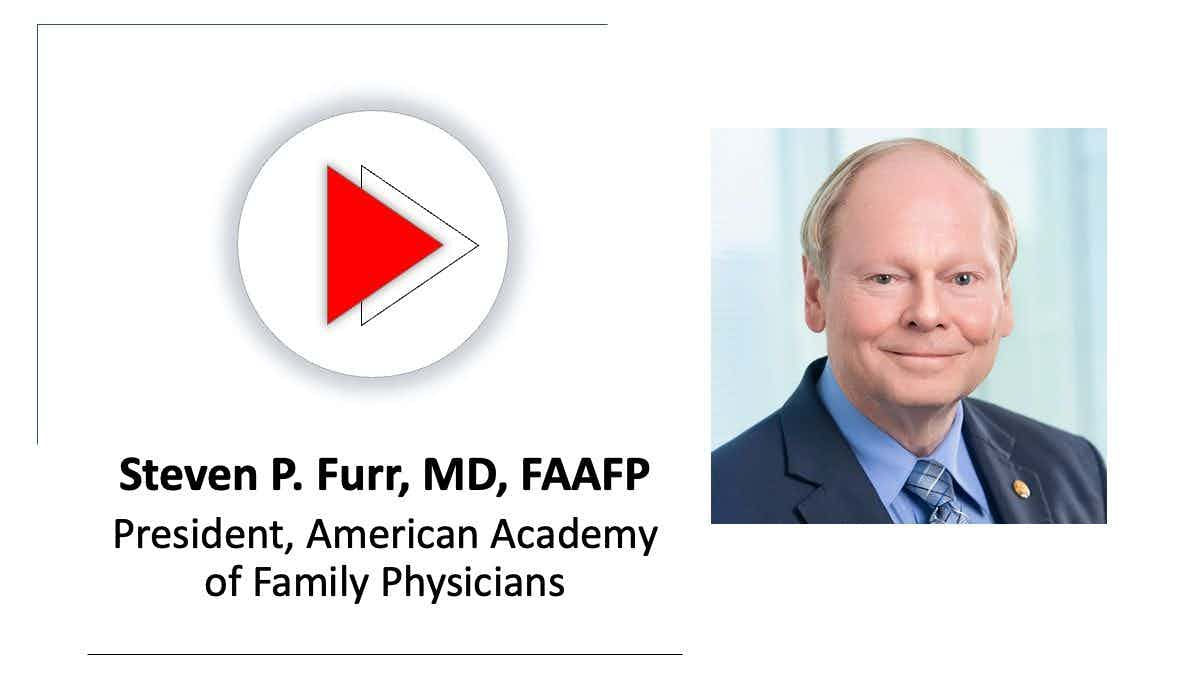
Finding financing for medical practices

Post-pandemic use of telehealth causes ‘modest’ increase in visits and spending
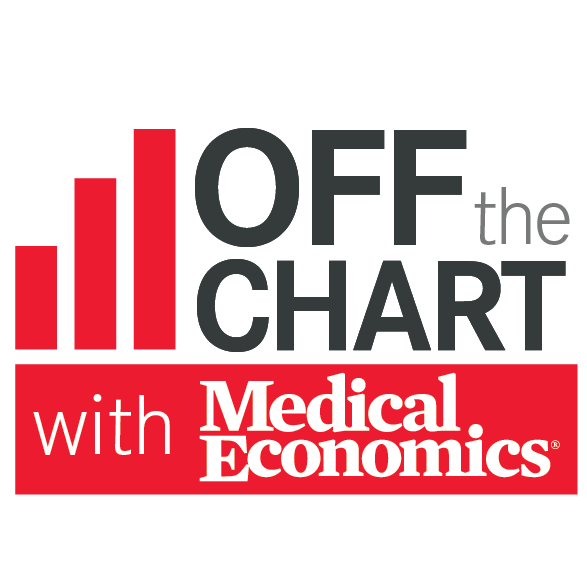
Episode 3: Tips for building a retirement nestegg
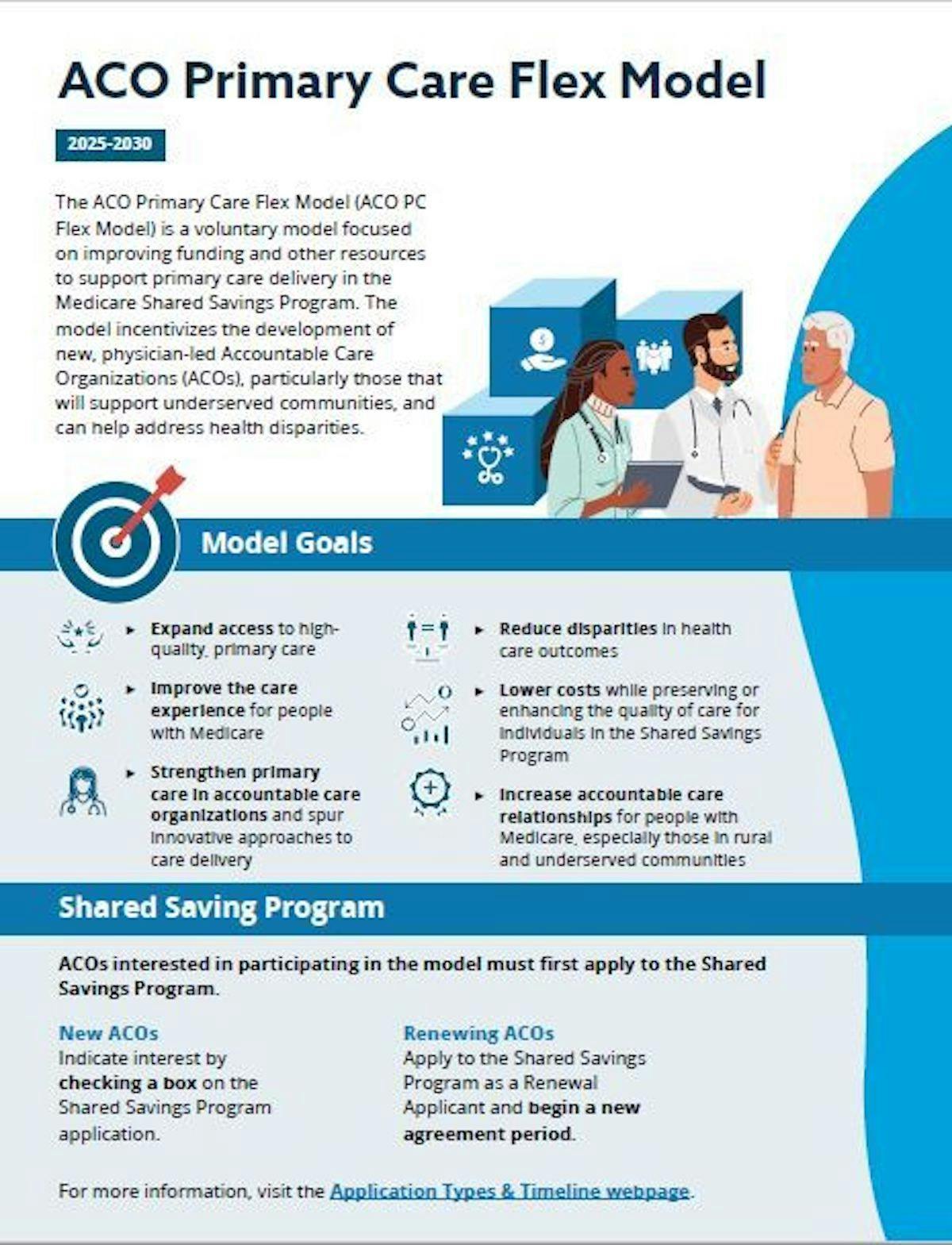
CMS introduces new ACO Primary Care Flex model

Taking aim at drug costs; analyzing heart risks; health care and climate change – Morning Medical Update
2 Commerce Drive Cranbury, NJ 08512
609-716-7777


Integrating Technicians in Reimbursement Requires Understanding CPT Codes
By empowering pharmacy technicians to actively participate in billing and reimbursement processes, health care practices can streamline operations, mitigate billing errors, and optimize revenue generation.
In today's rapidly evolving health care ecosystem, medication therapy management (MTM) stands out as a cornerstone of patient care. Within this landscape, the role of pharmacy technicians transcends traditional boundaries, evolving into critical support pillars for MTM services. By synergizing their expertise with pharmacists, pharmacy technicians wield significant influence over the optimization of billing practices and the precision of reimbursement processes within MTM. This strategic alignment not only heightens operational efficiency but also serves as a catalyst for maximizing revenue streams within healthcare practices.

Image credit: NINENII | stock.adobe.com

Central to the integration of pharmacy technicians in billing and reimbursement is a comprehensive understanding of relevant Current Procedural Technology (CPT) codes. Codes such as 99605, 99606, and 99607 delineate the scope of MTM services provided by pharmacists, allowing for accurate documentation and billing for these essential clinical interventions. A few key CPT codes are outlined below 1 :
CPT Code 99605: MTM Service(s) Provided by a Pharmacist, Individual, Initial 15 Minutes Face-to-Face with the Patient
This code signifies the provision of comprehensive medication therapy management services by a pharmacist during an initial 15-minute face-to-face encounter with the patient. Pharmacy technicians play a vital role in supporting pharmacists during these interactions by assisting with patient intake, data entry, and administrative tasks to ensure seamless delivery of care.
CPT Code 99606: Medication Therapy Management Service(s) Provided by a Pharmacist, Individual, Initial 15 Minutes Face-to-Face with the Patient; Additional 15 Minutes
For extended MTM sessions exceeding the initial 15 minutes, CPT code 99606 allows pharmacists to bill for each additional 15-minute increment of patient interaction. Pharmacy technicians contribute to this process by facilitating documentation, updating patient records, and assisting with follow-up communications, thereby optimizing workflow efficiency and ensuring accurate billing for extended services.
CPT Code 99607: Medication Therapy Management Service(s) Provided by a Pharmacist, Individual, Initial 15 Minutes Face-to-Face with the Patient; Additional 15 Minutes (List Separately in Addition to Code for Primary Procedure)
When billing for additional medication therapy management services provided beyond the primary procedure, CPT code 99607 is listed separately to indicate the allocation of extra time spent by the pharmacist in patient care activities. Pharmacy technicians support this billing practice by meticulously documenting the duration and nature of pharmacist-patient interactions, ensuring compliance with coding guidelines, and maximizing reimbursement opportunities.
MTM Pharmacist Pilot: Reimbursement Guidelines
The MTM reimbursement guidelines in Tennessee offer a structured framework for compensating health care providers for covered services. The key components of the reimbursement guidelines are listed below 2 :
Case Rates for MTM Covered Services
The reimbursement rates for MTM services are categorized based on the targeted disease states and the level of risk associated with the patient. These rates are as follows 2 :
- Targeted Disease States (Juvenile Asthma or Diabetes): Modifier U1 - $55.00 for 2 Months
- Medium-High Risk: Modifier U2 - $55.00 for 3 Months
- Critical, High Risk: Modifier U3 - $75.00 for 6 Months
- Exceptions: Modifier U4 - Rate based on level of care, subject to appropriate approval
CPT Codes, Descriptions, and Billing Process
The following CPT codes are utilized to indicate the services provided to the member:
- 99605: New patient visit, initial 15 minutes
- 99606: Established patient visit, initial 15 minutes
- 99607: Add-on code for each additional 15-minute increment
- 98966-98968: Telephone assessment and management services provided by a qualified nonphysician health care professional to an established patient
Pharmacists bill the appropriate CPT code along with the service modifier to receive the appropriate case rate reimbursement. If a visit exceeds 15 minutes, pharmacists also submit 99607 for each additional 15-minute increment. However, it is important to note that CPT code 99607 is for informational purposes only and does not impact claims payment.
Exception Handling
Pharmacists must complete and upload an MTM exception (ME) form to the Care Coordination Team for any service limit exceptions. Claims submitted beyond the risk-based maximum limit may be subject to recoupment unless an ME form is submitted and reviewed for completeness by the Managed Care Organizations.
Other Considerations
Only one case rate payment is made per member per month based on the pharmacist who submits the first claim for the billing month. If a member switches pharmacists during treatment, the service limit follows the member. Members who change risk categories are eligible for service limits equal to the higher risk service payment limit. Finally, claims must be submitted within the timely filing guidelines outlined in the provider administration manual.
Maximizing Pharmacy Technician Involvement for Optimal Reimbursement
By empowering pharmacy technicians to actively participate in billing and reimbursement processes, health care practices can streamline operations, mitigate billing errors, and optimize revenue generation. Training programs tailored to pharmacy technicians' roles in documentation, coding, and compliance foster a culture of accountability and excellence, ultimately enhancing the financial viability and sustainability of health care practices.
Incorporating pharmacy technicians into billing and reimbursement processes not only enhances operational efficiency but also fosters a culture of collaboration and excellence, driving positive outcomes for patients and health care practices alike. Through strategic utilization of CPT codes and effective training initiatives, pharmacy technicians can contribute significantly to the financial success and clinical excellence of their organizations in today's dynamic health care landscape.
Moreover, face-to-face services eligible for reporting during MTM visits encompass a range of activities critical to patient care and medication management. These include comprehensive medication reviews, medication counseling, adherence support, disease state management, health promotion, prevention, and follow-up monitoring. Pharmacy technicians play a crucial role in supporting pharmacists in these activities, ensuring accurate documentation of time spent on each service to optimize billing practices and reimbursement accuracy within the MTM program.
1. American Medical Association. (2023). Current Procedural Terminology (CPT) 2023. Chicago, IL.
2. Medication Therapy Management Program. Tennessee Division of TennCare. Accessed May 2, 2024. https://www.tn.gov/tenncare/providers/managed-care-contractors/pharmacy-benefits-manager/medication-therapy-management-pilot-program.html
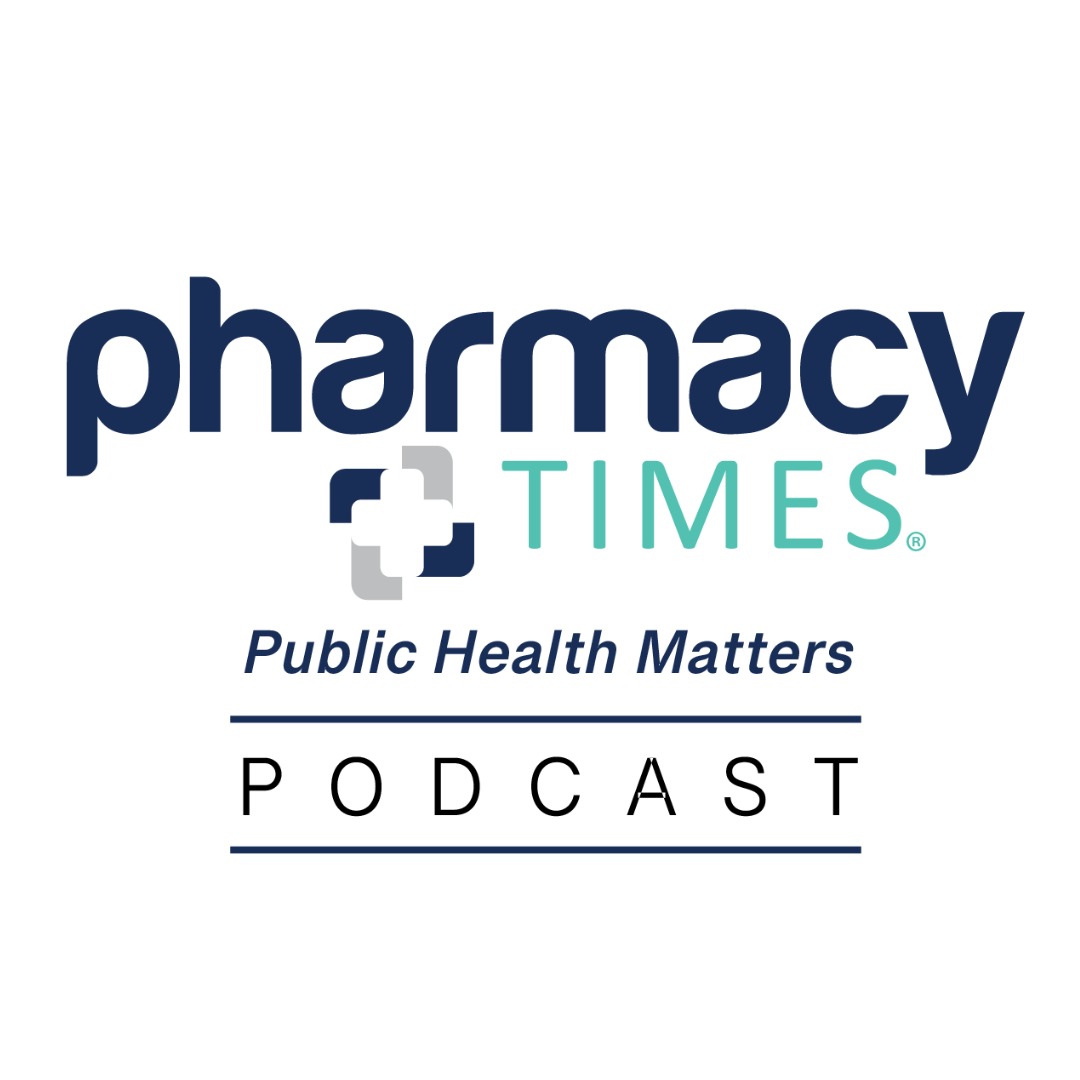
Pharmacy Focus: Community Pharmacy's Role in Social Determinants of Health

Hello, Generation Z: Welcome to Provider Status
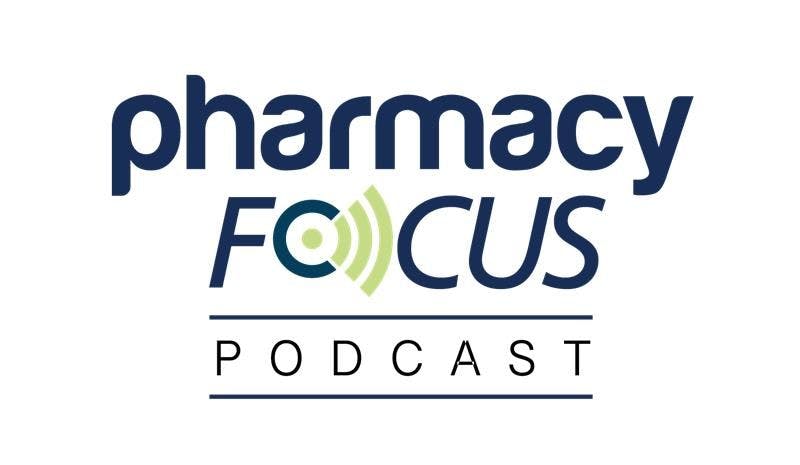
Pharmacy Focus: Policy Edition - Discussing the DRUG Act and PBM Reform

Officials Release Draft Legislation Aimed at Prescription Drug Shortage Issues

Zilebesiran Offers An RNA Interference Therapeutic Agent for Hypertension
2 Commerce Drive Cranbury, NJ 08512
609-716-7777

Join CT Mirror and its members in the work of producing unbiased journalism for Connecticut.
Get in-depth Connecticut journalism in your inbox.
Subscribe to CT Mirror's free daily newsletters.

Connecticut's Nonprofit Journalism.
Wide-ranging health care bill gets final approval from CT House

- Click to share on Facebook (Opens in new window)
- Click to share on Twitter (Opens in new window)
- Click to share on LinkedIn (Opens in new window)
- Click to share on Reddit (Opens in new window)
- Click to email a link to a friend (Opens in new window)
- Click to print (Opens in new window)

The House gave final passage Monday to a wide-ranging health care bill that would add protections for home care workers, boost preparedness for cyberattacks at medical facilities and establish new regulations for the state’s health information exchange, among other reforms.
The measure was adopted by a vote of 112-37. The vote was split mostly along party lines.
The sections on additional protections for home care workers were prompted by the murder of visiting nurse Joyce Grayson , who was killed in October while working at a halfway house in Willimantic. A man has been charged in connection with her murder, news outlets have reported .
“Many who were affected by the death of Joyce Grayson know how important this work and this conversation is,” said Rep. Cristin McCarthy Vahey, D-Fairfield, co-chair of the Public Health Committee.
The bill requires home health aide agencies to collect certain client information upon intake and make it available to any employee assigned to the client. Information includes a history of violence against health care workers, domestic abuse, substance use, psychiatric history, any listing on a sex offender registry, the crime rate of the municipality the person lives in, and whether there are any weapons or safety hazards in the home. The measure prohibits agencies from denying a client services based solely on the data collected or a refusal to provide it.
The proposal also mandates that home health agencies perform monthly safety assessments with direct care staff and implement a home care worker health and safety training curriculum. The state’s social services commissioner must ensure agencies provide evidence that they implemented training curriculums to continue receiving Medicaid reimbursements.
Additionally, home health agencies must report to the state clients’ verbal threats or abuse, and the public health department has to report annually to the legislature’s Public Health Committee the number of incidents and what steps were taken to ensure safety.
The measure also adds accountability measures for cyberattack readiness at health care facilities. Beginning Jan. 1, 2025, hospitals must annually submit plans for responding to a cybersecurity breach to an audit by an independent, certified cybersecurity auditor or expert credentialed by the Information Systems Audit and Control Association or similar entity. The auditor would review the adequacy of the plans, identify improvements, and make it available for state agencies, such as the public health department, to inspect.
That provision of the bill follows a cyberattack at three Connecticut hospitals that caused patients to be diverted for weeks, snarled operations at the facilities and created financial setbacks due to billing difficulties.
Records obtained by The Connecticut Mirror show the facilities — Rockville General, Manchester Memorial and Waterbury hospitals — had to cancel nearly half of their elective procedures and at times over the nearly six-week period couldn’t process X-rays or CT scans that are vital for treating potential stroke or heart attack victims.
Legislators pledged to enhance preparedness for future cyberattacks. An earlier version of the bill would have required the state to provide resources to hospitals in the event of a ransomware attack, including a radio communication system, intranet system for secure communication, cardiac monitors, fax machines and other equipment. The proposal was amended due to budget constraints.
The bill adopted Monday also makes changes to rules surrounding the statewide health information exchange. It exempts providers from connecting to the network under certain circumstances, including if they have no patient medical records or are licensed in the state and exclusively practicing as employees of a covered entity under Health Insurance Portability and Accountability Act (and the covered entity is legally responsible for decisions on the safeguarding or release of health information).
Providers also don’t have to share information with the exchange if doing so is prohibited by state or federal privacy and security laws or if the patient’s consent is legally required and has not been obtained, the measure states. A working group will study issues of privacy and cybersecurity related to the exchange.
The 40-section bill also:
- Creates a home health worker safety grant program.
- Requires the health department to obtain educational material on gun safety practices for primary care providers to give their patients.
- Requires the consumer protection department to study prescription drug shortages.
- Allows hospitals and other health care facilities to record data on the amount of employee time spent on requesting prior authorizations or pre-certifications from health carriers.
- Makes it a discriminatory practice for nursing homes to refuse applicants for admission solely because they received mental health services.
- Establishes a definition of “direct care” for the purposes of minimum nursing home staffing levels.
- Requires the mental health and addiction services commissioner to establish a peer-run respite center (run by a contracted nonprofit group) to provide peer respite and support services to adults.
- Requires licensed hospice agencies to encourage their staff to spend three weeks each in a pediatric intensive care unit or pediatric oncology unit to enhance their skills and expertise to prepare for roles in pediatric hospice care.
- Allows physicians and physician assistants who are employed at facilities licensed by the state health department to unionize in certain situations.
Rep. Susan Johnson, D-Windham, said the sections increasing protections for home care workers are necessary.
“This is what happens when we don’t take the precautions to make sure people are protected,” she said, referring to Grayson’s murder. “These are not the things we want to see our providers go through. We don’t want to see them assaulted. We don’t want to see them murdered. We want to make sure … they will be protected when they go into homes.”
Rep. Farley Santos, D-Danbury, praised the move to study the expansion of hospice services for children.
“As a father of a son who passed away and required pediatric hospice care, what this section is going to do is outline the need throughout the state. It’s going to outline what the cost may be,” he said. “It’s also going to investigate how we can expand those services. As someone whose family had to rely on those services, I applaud the committee for putting this section in here.”
Rep. Tammy Nuccio, R-Tolland, raised concerns about edicts in the bill that could drive up the overall cost of care, including a requirement that certain insurance policies cover coronary calcium scans.
“Every mandate that we pass does nothing to bring down the cost of care,” she said. “All it does is say insurance companies have to pay more money, which increases the cost of care because it increases the claims.
“In June, when we come back in here to look at the [insurance] rate review, and everybody throws their hands up in mock-disgust that rates are going up and insurance is so expensive — not a single person in this chamber will stop and say, ‘What did we do in the last legislative session that increased the cost of health care?’”
The Senate approved the measure last week with a vote of 34-1. Sen. Rob Sampson, R-Wolcott, was the lone dissenter.
Sen. Saud Anwar, co-chair of the Public Health Committee and a physician under contract at Manchester Memorial Hospital, said during the prolonged technology outage at the three Connecticut hospitals affected by a cyberattack, thousands were unable “to get the level of care they should have gotten.”
“Unfortunately, it’s a matter of time before more hospitals in our state will be impacted by cybersecurity and cyberterrorist attacks,” he said. “This is important for us to address. It is critical to be prepared. If you plan in advance, the risk and complication rates are going to be much less.
“Every single day, across the country, our hospitals and health care systems are being compromised through cyberattacks and their information — or the patient’s — is at risk. That’s precisely why we need a comprehensive plan in the state of Connecticut to be ready anytime there is an issue.”
The measure now heads to Gov. Ned Lamont’s desk for a signature.
Jenna Carlesso Health Reporter
Jenna is The Connecticut Mirror’s health reporter, focusing on access, affordability, equity, and disparities. Before joining the CT Mirror, she was a reporter at The Hartford Courant for 10 years, where she covered government in the capital city with a focus on corruption, theft of taxpayer funds, and ethical violations. Her work has prompted reforms on health care and government oversight, helped erase medical debt for Connecticut residents, and led to the indictments of developers in a major state project. She is the recipient of a National Press Foundation award for a four-part series she co-authored on gaps in Connecticut’s elder care system.
An official website of the United States government
Here's how you know
Official websites use .gov A .gov website belongs to an official government organization in the United States.
Secure .gov websites use HTTPS A lock ( ) or https:// means you've safely connected to the .gov website. Share sensitive information only on official, secure websites.
CMS Newsroom
Search cms.gov.
- Physician Fee Schedule
- Local Coverage Determination
- Medically Unlikely Edits
List of Telehealth Services
List of services payable under the Medicare Physician Fee Schedule when furnished via telehealth.
List of Telehealth Services for Calendar Year 2024 (ZIP) - Updated 11/13/2023
Medicare Telehealth Originating Site Facility Fee, Q3014

COMMENTS
Initial nursing home visits are coded with 99304-99306. CPT is deleting the code for nursing home annual exams (99318), which will instead be coded as subsequent nursing home visits (99307-99310 ...
Type of Bill (TOB) 21X for SNF inpatient services. 18X for hospital swing bed services. FL 06. Statement Covers Period (From and Through dates) From date must be the admission date or, for a continuing stay bill, the day after the Through date on the prior bill. Through date is the last day of the billing period. FL 31-FL 34.
As of April 22, due to the COVID-19 public health emergency, CMS is waiving the requirement in 42 CFR 483.30 for physicians and non-physician practitioners to perform in-person visits for nursing home residents and allow visits to be conducted, as appropriate, via telehealth options.Prior to this, telehealth was only available for established patient visits.
According to Medicare, either the NPP or the physician can perform the mandated follow-up visits in the SNF or the NF. But in the NF, qualified NPPs cannot be employed by the facility. Use the Subsequent Nursing Facility Care codes to report federally mandated and any medically necessary visits that might arise.
Make sure your billing staff knows about billing for the new E/M visit family: • Codes • Care settings . Background Starting with claims for services on January 1, 2023, the 2 E/M visit families titled "Domiciliary, Rest Home (e.g., Boarding Home), or Custodial Care Services" and "Home Services" are now 1 E/M code family.
Evaluation and Management visit families titled "Domiciliary, Rest Home (e.g., Boarding Home), or Custodial Care Services" and "Home Services" have merged into one single code family. This new code family is titled "Home or Residence Services," and the place of service codes that can be billed with this code family are being revised.
Beginning with dates of service on and after January 1, 2023, nursing facility E/M services, are selected based on time or the level of medical decision making (MDM). When selecting time, it includes total time spent on the day of the encounter. Time is defined in the service descriptors used for selecting appropriate level of service.
ICN 006846 August 2014. Medicare Part A covers skilled nursing and rehabilitation care in a Skilled Nursing Facility (SNF) under certain conditions for a limited time. This billing reference provides information for SNF providers about: SNF coverage; SNF payment; SNF billing; and Resources for more detailed information.
CMS also created three new HCPCS Level II codes — G0316, G0317, and G0318 — to be reported in place of 99418 for prolonged hospital inpatient or observation care E/M services: G0316 may be reported in addition to 99223, 99233, and 99236 for inpatient and observation visits. Similar to 99418, the total time spent in applicable activities on ...
99304-99306: Initial Nursing Facility Care. These codes specifically designate the billing for the initial care provided to residents entering a nursing facility. They encompass a range of services during the initial evaluation and consultation phase. 99307-99310: Subsequent Nursing Facility Care. Covering subsequent care visits within the ...
Unlike other E/M codes 99202-99205, and 99212-99215, time alone cannot be used when reporting 99211 when selecting the appropriate code level for E/M services. Effective January 1, 2021, time was removed as an available code-selection criterion. The typical time spent on this code is five minutes. Other visits billed with 99211.
• Deletion of Domiciliary, Rest Home (eg, Boarding Home), or Custodial Care Services E/M codes 99324-99238, 99334-99337, 99339, 99340 ... observation care visits, and consultations. Most of the categories are further divided into two or more subcategories of E/M services. For example, there are two subcategories of office visits
Coding Guidelines. Home/domiciliary services provided for the same diagnosis, same condition or same episode of care as services provided by other practitioners, regardless of the site of service, may constitute concurrent or duplicative care. When such visits are provided, the record must clearly document the medical necessity of such services ...
Coding an Emergency Visit. For an emergency, the ophthalmologist has a choice of billing an office visit code, a subsequent nursing code or an eye code, depending on where the service is rendered. Proper CPT coding states you can bill the emergency code (99058) and, if appropriate, add an after-hours code (99050-99054) to the nursing-home code ...
Home and Domiciliary Visits. Home and domiciliary visits are when a physician or qualified non-physician practitioner (NPPs) oversee or directly provide progressively more sophisticated evaluation and management (E/M) visits in a beneficiary's home. This is to improve medical care in a home environment. A provider must be present and provide ...
Blog Introduction: When a physician visits a nursing home, they are responsible for billing the visit. ... In this article, we will discuss how physicians should bill for nursing home visits and . Home About Mission Services Blog Contact (818) 275-1705 0. Home. About. Mission. Services. Blog. Contact (818) 275-1705 0. Blog. Get the ...
An additional purpose of this Change Request is to update the Internet-Only Manual with billing instructions for the Nursing Facility Visits code family to align with the Nursing Facility Visits policy published in the CY 2023 Final Rule (CMS-1770-F), titled: Revisions to Payment Policies under the Medicare Physician Fee
Speech-Language Pathology for urban centers - $23.16, and for rural centers - $29.18. Nursing for urban centers - $108.16, and for rural centers - $103.34. Non-Therapy Ancillaries for urban centers - $81.60, and for rural centers - $77.96. Non-case mix adjusted for urban centers - $96.85, and for rural centers - 98.64.
0521- Clinic Visit 0522- Home Visit 0524- Part A SNF Visit 0525- SNF, NF or Residential facility (Non Part A) Visit ... Exception is the Chronic Care Management services Part of provider's services previously ordered integral, though incidental ... Adjustments OK—717 Type of Bill; CC=D1; ICN# in FL 64, remarks ...
If a physician tries to bill an initial visit before the nursing home discharges the patient, the payer will likely deny payment for the visit, she adds. Something else to keep in mind: Medicaid requirements may differ from state to state. For example, Connecticut Medicaid requires nursing homes to hold the bed for 14 days, says Kagan.
when billing for skilled nursing . care visits in the home setting. Revenue code 0551 requires one of the following T codes: T1030 nursing care, in home, by registered nurse, per diem . T1031 nursing care, in home, by licensed practical nurse, per . diem • Brief skilled nursing visit if only one of the following activities is performed during ...
Exceptions: Modifier U4 - Rate based on level of care, subject to appropriate approval; CPT Codes, Descriptions, and Billing Process. The following CPT codes are utilized to indicate the services provided to the member: 99605: New patient visit, initial 15 minutes; 99606: Established patient visit, initial 15 minutes
Sen. Ted Cruz (R-Texas) has become the subject of much bemusement among his Senate GOP colleagues as he has taken a detour from his role as a conservative rabble-rouser to playing the lead on reaut…
sheets/medicare-telemedicine-health-care-provider-fact-sheet: Medicare telehealth visits, virtual check-ins and e-visits. Note, this toolkit is designed to provide information only and not intended to endorse any non-federal entities. Information specific to nursing homes is indicated by an asterisk (*). 2 3/27/2020
And for non-urgent matters, our network also offers Video Visits. Save time and money with a virtual visit with one of our doctors or nurse practitioners. Let us help with minor ailments and conditions like pink eye, allergies, skin conditions, and more. Get the care you need on your time, at your convenience, and at a more affordable price point.
The House gave final passage Monday to a wide-ranging health care bill that would add protections for home care workers, boost preparedness for cyberattacks at medical facilities and establish new ...
List of services payable under the Medicare Physician Fee Schedule when furnished via telehealth.List of Telehealth Services for Calendar Year 2024 (ZIP) - Updated 11/13/2023